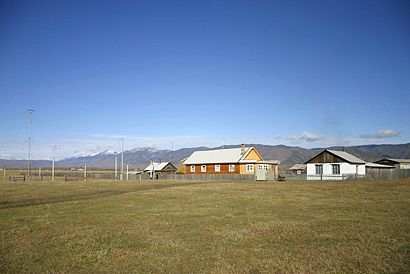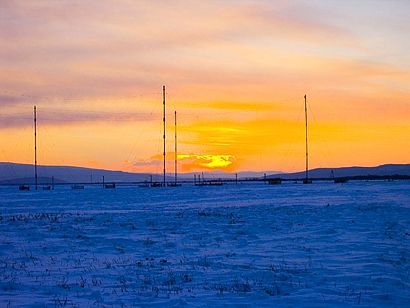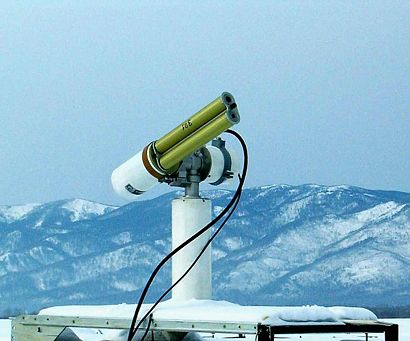Institute of Solar-Terrestrial Physics of Siberian Branch of Russian Academy of Sciences (ISTP SB RAS)
Geophysical Observatory
From ISTP SB RAS
|
Is located in Tory, 150 km away from Irkutsk
[edit] The major task is:To monitor structure and dynamics of the upper and middle atmosphere by passive radiophysical and optical methods. [edit] Observation types:
|
[edit] Observational results of mid-latitude auroras in the Eastern-Siberia south region during strong geomagnetic storms in October 29–31and November 20–21, 2003.A.B. Beletsky, N.M. Grudinin, Yu.S. Karavaev, N.V. Kostyleva, V.A. Lukin, A.V. Mikhalev, M.A. Chernigovskaya Optical observation results of mid-latitude auroras (MA) in the ISTP SB RAS Geophysical Observatory in the Eastern-Siberia south region (520N, 1030 E) during strong geomagnetic storms in October 29–31and November 20–21, 2003. Observations were made in atomic oxygen emission lines of 558 and 630 nm, in spectral ranges of 360-410 and 720-830 nm with the use of zenith photometer. Observation results are compared with those of MA obtained in the Geophysical Observatory in corresponding heliophysical situations during preceding years. Optical display of MA during the October 29–31, 2003 geomagnetic storm attributes it to intensive MAs, whereas MA during the November 20–21, 2003 geomagnetic storm is the extreme one ever registered in the Geophysical Observatory. Maximum zenithal intensities of 558 and 630 nm emissions registered in November 20, 2003 are ~ 11 kR and ~ 19 kR, respectively. These are highest emission-intensity values registered in the Geophysical Observatory during the optical observation period (1989–2003). Highest intensity values of the 630 nm emission have been registered in the second part of the night that is typical of longitudinal middle-latitude regions under consideration [1]. This work is supported by the RFBR grant (No. 03-05-64744) and the state-assistance grant No. НШ-272.2003.5 of leading scientific schools of the Russian Federation. |
[edit] Instruments of the Geophysical Observatory:
|
- This page has been accessed 7,575 times.


